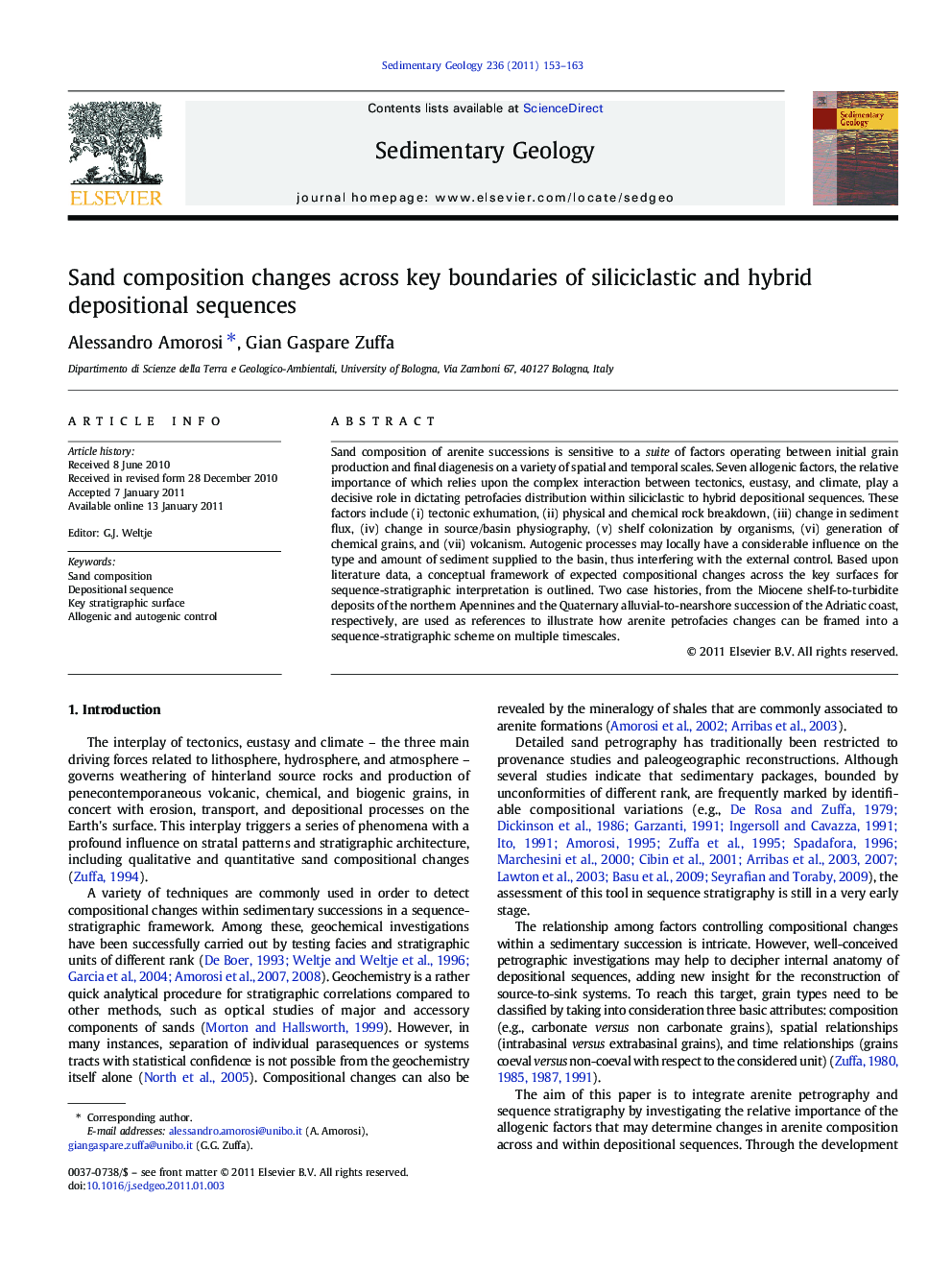| Article ID | Journal | Published Year | Pages | File Type |
|---|---|---|---|---|
| 4690135 | Sedimentary Geology | 2011 | 11 Pages |
Sand composition of arenite successions is sensitive to a suite of factors operating between initial grain production and final diagenesis on a variety of spatial and temporal scales. Seven allogenic factors, the relative importance of which relies upon the complex interaction between tectonics, eustasy, and climate, play a decisive role in dictating petrofacies distribution within siliciclastic to hybrid depositional sequences. These factors include (i) tectonic exhumation, (ii) physical and chemical rock breakdown, (iii) change in sediment flux, (iv) change in source/basin physiography, (v) shelf colonization by organisms, (vi) generation of chemical grains, and (vii) volcanism. Autogenic processes may locally have a considerable influence on the type and amount of sediment supplied to the basin, thus interfering with the external control. Based upon literature data, a conceptual framework of expected compositional changes across the key surfaces for sequence-stratigraphic interpretation is outlined. Two case histories, from the Miocene shelf-to-turbidite deposits of the northern Apennines and the Quaternary alluvial-to-nearshore succession of the Adriatic coast, respectively, are used as references to illustrate how arenite petrofacies changes can be framed into a sequence-stratigraphic scheme on multiple timescales.
